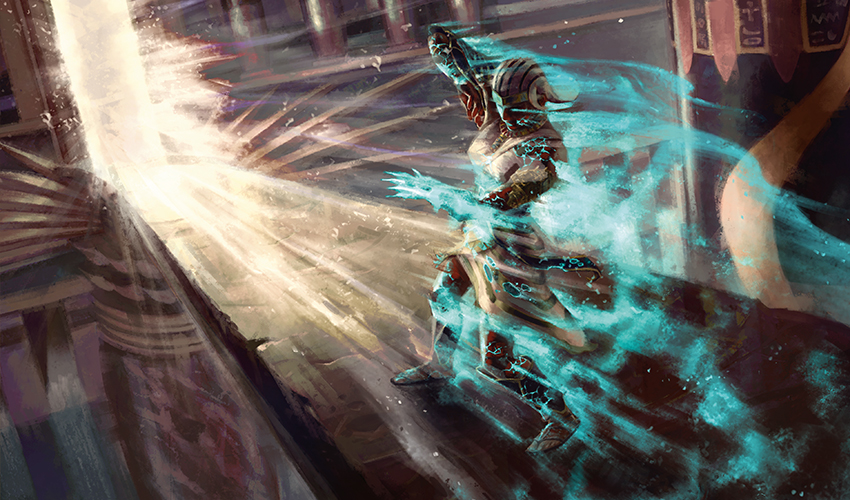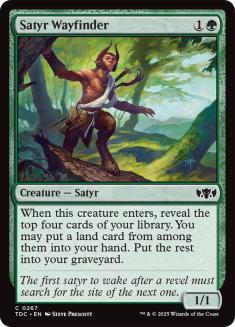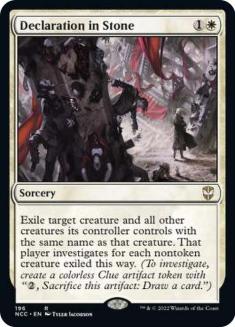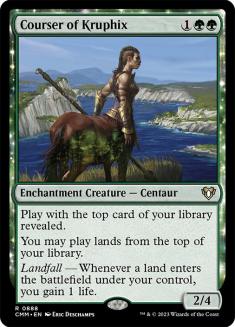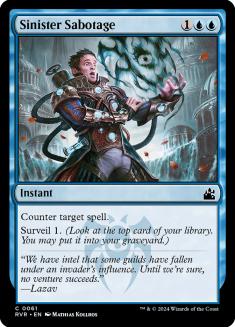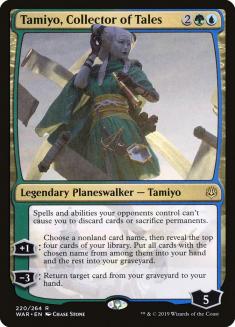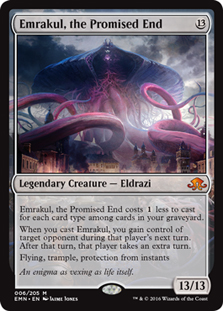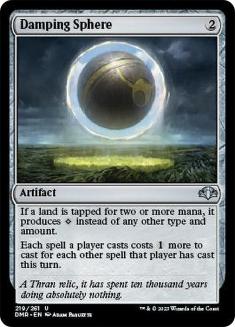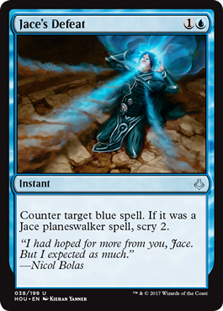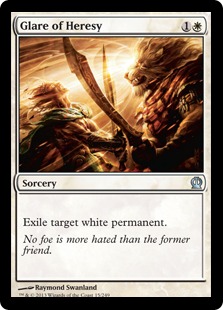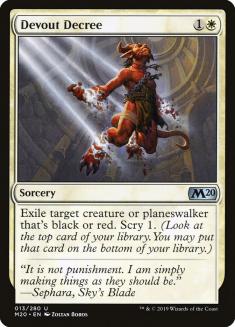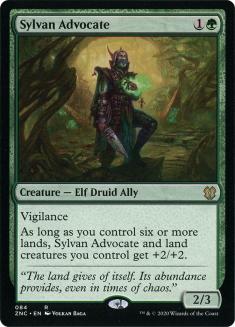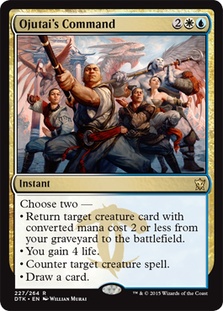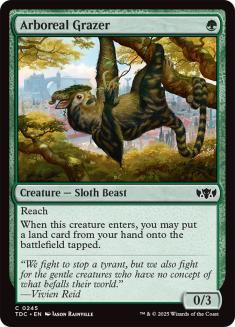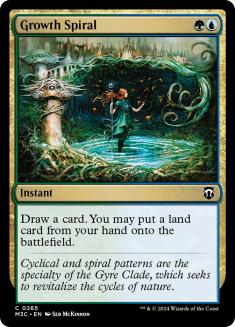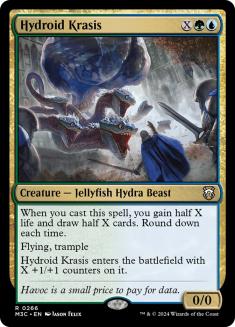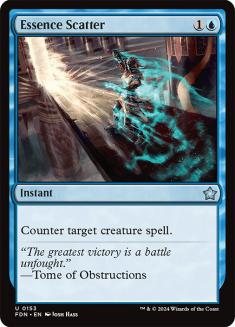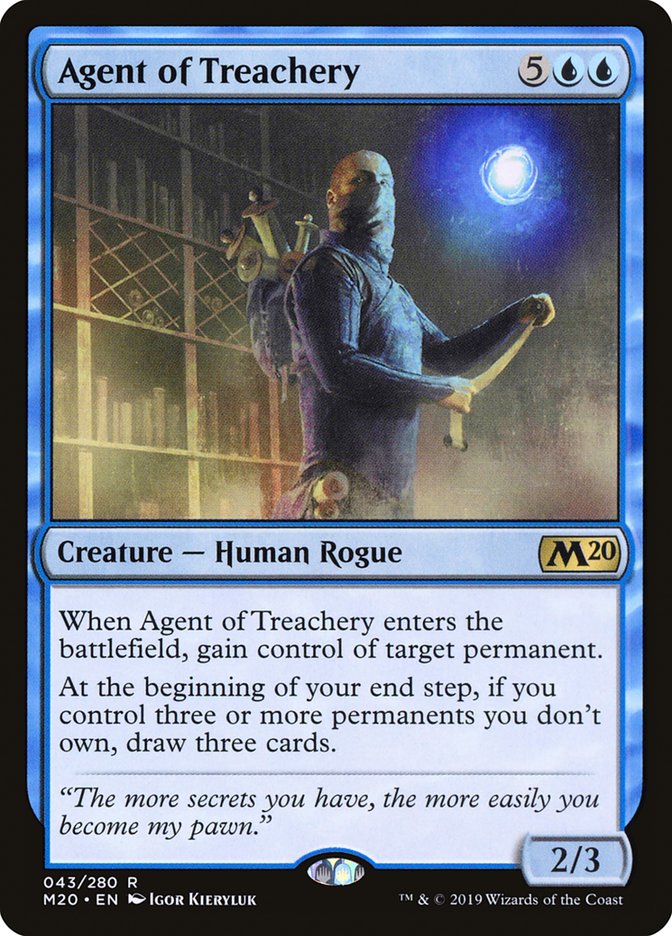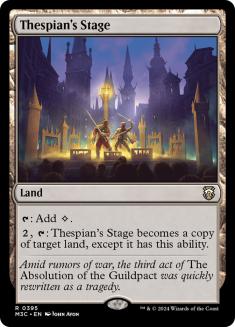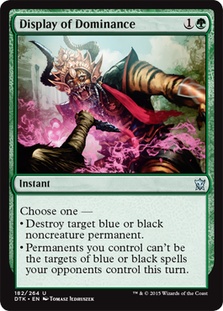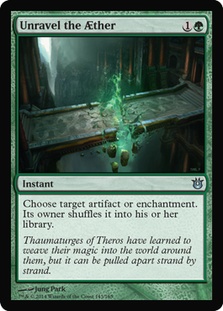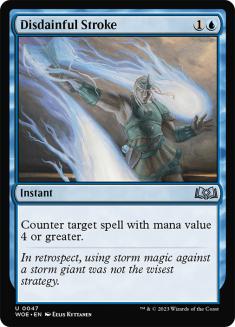I’ve been avoiding Pioneer because the combo-centric nature of the format didn’t appeal to me, so I was hoping at least one card would get banned to open up the format again. After that didn’t happen, I resigned myself to the idea that this is what we’re stuck with, so I took a look at the format to see if I could find any fresh ways to attack it. I came to one conclusion I’m excited about.
Given that Lotus Breach has been losing favor / getting pushed out of the format, especially backed by “official” confirmation from Ian Duke that the deck has not been performing well, the format we’re left with is highly creature-centric. More to the point, the remaining combo decks are creature combos. Creature removal should be great in this format, except that Heliod, Sun-Crowned is indestructible; Walking Ballista can win on the spot with Heliod even through removal if its caster has a lot of mana; and Inverter of Truth and Thassa’s Oracle often function as spells attached to creatures. It seems that there’s been a general assumption in deckbuilding that black is necessary for interactive multicolor decks because Fatal Push is the best removal spell, but what if Essence Scatter is really the best removal spell right now?
I’ve never seen Essence Scatter cast in Pioneer and this is starting to look like a huge oversight.
I’ll acknowledge that Black also offers Thoughtseize, which isn’t directly replaceable outside of Black, but I don’t think that effect is necessary. I’ve always found that there were a lot of matchups where the card felt pretty awkward outside of Mono-Black Aggro, and I think counterspells are an acceptable substitute when it comes to keeping important spells from resolving.
Without a dependence on black, a wide variety of new decks are color combinations are suddenly on the table. Here’s the first deck I wanted to build based on this hypothesis:
Creatures (12)
Planeswalkers (6)
Lands (26)
Spells (16)

Essence Scatter answers expensive creatures and prevents enters-the-battlefield abilities from triggering, but it can be slow enough to allow some creatures to get under you. To make up for this, I wanted lifegain and sweepers. In addition to providing that lifegain, I think Uro, Titan of Nature’s Wrath is one of the strongest cards in the format, so my goal is to find a better home for Uro.
Opt, Jace, and Satyr Wayfinder are basically here to fill the graveyard for Uro. The spell options for Jace are a little limited, but the self-mill in Satyr Wayfinder and Tamiyo, Collector of Tales helps with that, and Opt helps make sure you can usually at least get something out of it.
Declaration in Stone isn’t the best removal spell, but this deck should be able to go over opponents enough in the late-game that giving them a Clue isn’t the end of the world and it seems important for Jace and Tamiyo to have access to some spot removal. I think this card could overperform, and more might be optimal. I’m starting with a relatively low count despite the fact that that could be sub-optimal for Game 1 because the sideboard has so much spot removal, so I think it might be most space efficient to minimize space dedicated to it in Game 1.
Courser of Kruphix isn’t a great card to pair with Supreme Verdict, but it plays really well with Uro by allowing you to keep lands in your hand while playing lands from the top of your library. It also plays well with Tamiyo, by allowing you to know the top card of your library so that you can name something that will definitely hit with Tamiyo’s +1 ability, and plays well in a deck that has a lot of ways to change its top card to try to find a land, which this certainly does. Adding the enchantment card type also helps with the Emrakul, the Promised End out of the sideboard.
Teferi Time Raveler is included basically for general utility and raw strength. Conceptually, I was attracted to the idea that this could prevent a Bant Spirits player from countering Supreme Verdict with Spell Queller. In practice, I’m not sure how often you can keep Teferi on the battlefield when you want to cast Supreme Verdict. I expect it to perform pretty well against Dimir Inverter specifically, especially after sideboarding, when counterspells become more important on both sides.
Sinister Sabotage offers a little extra milling to support Uro, which is why I chose it over Absorb. I’d prefer it in a deck that had more productive uses for unspent mana at the end of the opponent’s turn, but I think it’s necessary to giving the deck enough interaction in general. There’s some chance this could want to be Thassa’s Intervention instead, or a mix of these cards.
Tamiyo, Collector of Tales is something of a pet card that I think is generally underappreciated, and it plays well with Uro and counterspells to lock up the game. I wouldn’t be surprised if some or all of these would be better as Nissa, Who Shakes the World to just end things, as much as I hate doing that.
I think this deck benefits a lot from sideboarding because the removal spells in this color combination aren’t great, but the color-specific removal spells are, so this deck gets to sideboard into real removal options. In particular, Glare of Heresy was one of the most appealing parts of playing white to me, given the current popularity of Heliod decks.
Tireless Tracker is mostly there to hedge against graveyard removal, since the maindeck relies entirely on Uro to actually end games. For the most part, you’re hoping to answer whatever your opponent is using to attack your graveyard and keep Uro as your primary finisher, but it’s important not to strictly rely on it. Sinister Sabotage gets a lot better once you have Tireless Tracker so that the Clues can offer a mana sink after you’ve left up mana for a counterspell.
Emrakul doesn’t get us away from graveyard reliance, but I think that the single slot can have a huge impact in control matchups, so I think it’s worth a space.
Damping Sphere is a hedge to try to steal games against Lotus Breach, which I expect to be a terrible matchup. I could see giving up entirely and playing something else in this slot.
These are great cards against Bant Spirits and Dimir Inverter, and I think you’re going to be too disadvantaged against opposing blue decks if you don’t have some of your own.
The rest of the sideboard is just efficient color-specific removal to bring in against decks of the colors it targets.
I don’t know the best way to include them, but another package I’m interested in in this kind of deck is Sylvan Advocate and Ojutai’s Command. Sylvan Advocate has always impressed me in Pioneer and plays well with Uro, Titan of Nature’s Wrath. It also gives us a threat that doesn’t need the graveyard and blocks well in the early-game. If Essence Scatter is good in the format, Ojutai’s Command should also work well, and it plays really well with Jace, Vryn’s Prodigy as well as Sylvan Advocate.
It’s hard to want to lean more heavily on creatures in a Supreme Verdict deck and I worry that Sylvan Advocate doesn’t block against Bant Spirits. Maybe there’s a version of this deck with fewer Supreme Verdicts and Tamiyo, and with Sylvan Advocate, Ojutai’s Command, and a full set of Declaration in Stone. That might require moving away from Opt, but with Ojutai’s Command for Jace, Vryn’s Prodigy to use, that might not be too bad.
Another question I had is whether we really even want a third color. Here’s a take on Simic:
Creatures (23)
- 3 Courser of Kruphix
- 4 Satyr Wayfinder
- 2 Tireless Tracker
- 4 Hydroid Krasis
- 4 Arboreal Grazer
- 2 Agent of Treachery
- 4 Uro, Titan of Nature's Wrath
Planeswalkers (2)
Lands (27)
Spells (8)

This deck has a lot less interaction and a lot more pressure, thanks to Hydroid Krasis. This is a ramp deck rather than a midrange/control deck, just one that treats Essence Scatter as the optimal interaction point to make sure it reaches the late game.
This is the central ramp package. These cards are all really strong as long as we consistently have enough lands to play with them.
In addition to playing 27 lands, these cards help make sure our additional land placement opportunities aren’t lost.
These are the payoffs for all the extra lands we’re playing. Both convert into more cards, which combine with Uro, Titan of Nature’s Wrath to make sure that we have plenty of action and don’t just flood out.
Our sole piece of early interaction, this likely does everything we actually need, as the ramp plan is very good against reactive decks and so much of the proactive plans in the format rely on resolving (but not necessarily protecting) creatures.
Tamiyo is almost always going to be digging for Hydroid Krasis, which incidentally also digs for and fuels Uro. This really helps our threat density.
Agent of Treachery is a nod to the consideration that we might need to interact with opposing permanents in some way eventually. It’s not the most efficient, but we have enough ramp and defense that I don’t think efficiency should be prioritized.
Because this deck wants to play a lot of lands to take advantage of the ramp that allows you to play more lands, I get to play more lands than I need in order to support my early spells. This offers space for utility lands of some sort.
Lotus Field is a good fit with Uro despite the fact that it makes the mana to cast it a little less clean (providing three mana of a single color, which basically means you need five mana to escape) because it fills the graveyard when it sacrifices lands. Adding Thespian’s Stage allows the deck to have a powerful additional ramp spell hidden in its lands; it turns out you don’t have to abuse Lotus Field with spells that untap it to get extra mana by copying it with Thespian’s Stage.
In most decks, this combination isn’t worth inclusion because it offers more mana than you really need and disrupts your early mana because Lotus Field can’t be one of your first two lands and Thespian’s Stage is colorless, but with 21 other lands in the deck plus Satyr Wayfinder and relatively clean mana, this deck can afford the package and use the extra mana to supercharge Hydroid Krasis.
Emrakul is probably better in the sideboard here than it was in Bant. We’re a little worse at having different types, but a lot better at just having a lot of mana. We want it for the same reason, to trump opposing control decks.
Heaven // Earth is a nod to still wanting a sweeper against Bant Spirits. I don’t expect it to have applications anywhere else, but I think it’s the strongest card available in that matchup.
Display of Dominance answers Ashiok, Dream Render and Leyline of the Void, as well as Jace, Wielder of Mysteries and various other cards. It’s likely best against Azorius Control and Dimir Inverter. It pairs well with Essence Scatter to round out our answers to troublesome permanents where applicable.
Unravel the Aether is mostly for Heliod.
Aether Gust is mostly for Mono-Red Aggro, since it’s basically the only removal spell we have access to.
Additional counterspells round out the sideboard. They’re generally well-positioned in the format and our alternatives are pretty limited. Our own Lotus Fields prevent us from wanting Damping Sphere.
We could play basically anything and rely on Lotus Field to cast it, but I don’t think that would be a good idea. Ugin, the Spirit Dragon or even Ugin, the Ineffable might be reasonable inclusions if we need more answers to permanents.
If nothing else works out or appeals here, the takeaway could simply be, “Consider adding Essence Scatter to your deck” – maybe even Heliod decks should consider splashing Essence Scatter.
In general, if your deck is primarily looking for additional interaction to buy time, especially if you have problems with combo decks, Essence Scatter could be the card you’re looking for, which feels pretty weird to write, but that’s the nature of these decks and this format at the moment.

